وقتی صحبت از تخمین چابک میشود، نمیتوان از اصول پایه آن غافل شد: استفاده از واحدهای تخمین نسبی (مانند امتیاز داستان)، ترویج بحثهای دقیق درباره محتوای داستانهای کاربری، تشکیل توافق و تعهد به راهحل و تقویت تیم از طریق همکاری همبسته.
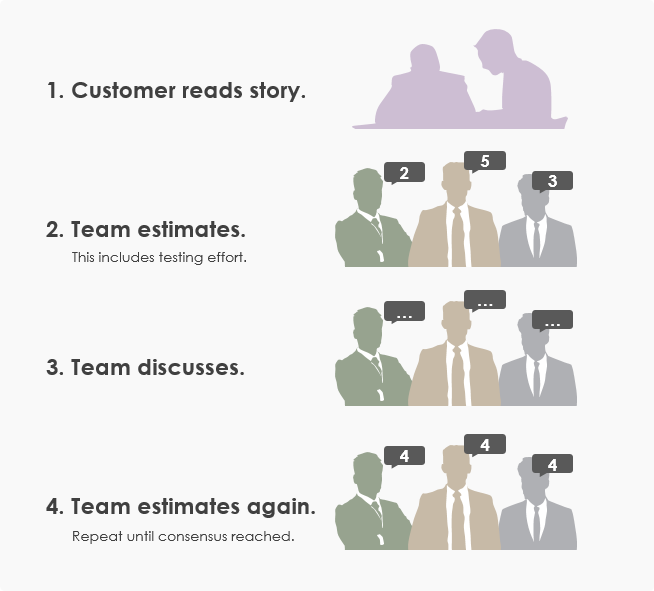
بسیاری از تیمهای چابک اطراف من از «پوکری برنامهریزی» برای تخمین امتیاز داستان استفاده میکنند. اگرچه این روش محبوب است، اما محدودیتهایی نیز دارد.
برای مثال:
- عملکردی که باید تخمین زده شود بسیار بزرگ است و تخمین با «پوکری برنامهریزی» آسان نیست؛
- 300 داستان به دست میآید؛
- داستان کاربری که باید تخمین زده شود اطلاعات کافی برای مرجع ندارد؛
- زمان محدود است و فرصتی برای تخمین کل لیست تقاضای محصول وجود ندارد.
بنابراین، این مقاله نه تنها محبوبترین روشهای تخمین چابک «پوکری برنامهریزی» را معرفی میکند، بلکه 6 روش دیگر تخمین چابک را نیز برای برآورده کردن تمام نیازهای شما در تخمین داستانهای کاربری ارائه میدهد.
1. پوکری برنامهریزی
تمام شرکتکنندگان از کارتهای بازی شمارهدار برای تخمین داستان کاربر استفاده میکنند، بهصورت ناشناس رأی میدهند، در صورت وجود اختلاف بزرگ بحث میکنند و سپس دوباره رأی میدهند تا زمانی که کل تیم به توافقی در مورد دقت تخمین برسد. استفاده از پوکری برنامهریزی محدودیتهایی دارد و برای تیمهای کوچک (5–8 نفر) و تعداد کمی از داستانهای کاربری (تا 10) مناسبتر است.
نکته:اگرچه این یک قاعده نیست، اما به شدت توصیه میشود که داستانهای کاربری در لیست کارهای معوقه محصول بزرگتر از 13 امتیاز نباشند؛ تا تیم شما بتواند داستانهای کاربری را به سطح جزئیاتی که به راحتی قابل تخمین است، بهوضوح درک کند.
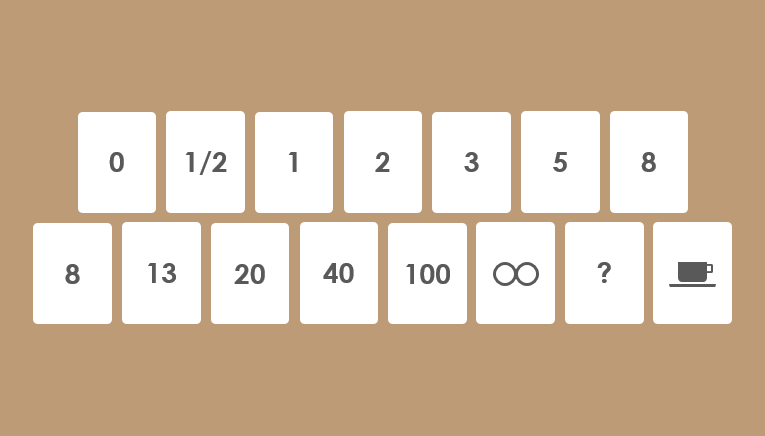
2. اندازه تیشرت
از اندازه تیشرت برای تخمین اندازه داستان کاربر استفاده کنید: XS، S، M، L، XL. اندازه هر سایز نیاز به بحثی باز و صادقانه را نشان میدهد. این روش سریع و آسان است و میتوانید اندازه لیست تقاضای محصول را بهصورت جسورانه تخمین بزنید.
نکته:این روش برای تخمین لیست تقاضای عظیم داستانهای کاربری بزرگ مناسب است، بهویژه زمانی که چندین تیم اسکرام بر روی یک محصول کار میکنند.
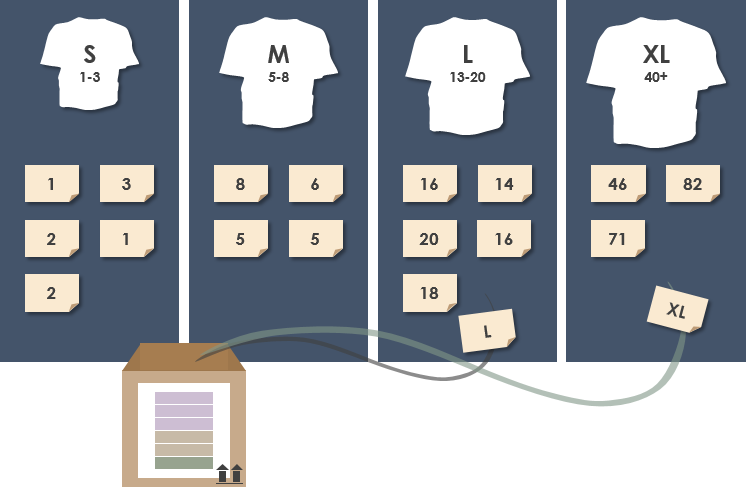
3. رأیگیری نقطهای
این روش برای تخمین داستانهای کاربری کوچک مناسب است و خود روش بسیار ساده و مؤثر است. «رأیگیری نقطهای» روشی برای تصمیمگیری است، اما میتوانید از آن برای تخمین داستانهای کاربری نیز استفاده کنید. روش این است: هر شخص تعدادی یادداشت چسبان دریافت میکند و آزاد است که انتخاب کند کدام داستانهای کاربری را رأی دهد. هرچه داستان کاربری نقاط بیشتری بگیرد، حجم بیشتری را نمایندگی میکند.
نکته:این روش میتواند در تیمهای بزرگ و کوچک استفاده شود، اما باید تعداد داستانهای کاربری تخمینزدهشده را محدود کنید.
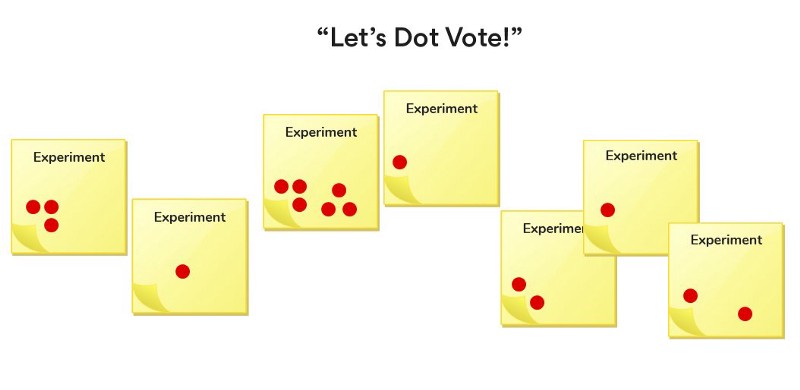
4. سیستم سطل
فرض کنید شما تعداد زیادی داستان کاربری دارید که باید تخمین زده شوند و میخواهید کل فرآیند را تسریع کنید. در واقع، شما به دنبال تخمینی هستید که از پوکری برنامهریزی کارآمدتر باشد، بنابراین «سیستم سطل میتواند انتخاب مطلوبی باشد.»
ابتدا چند «سطل» را به ترتیب «کارت پوکری برنامهریزی» تنظیم کنید. سپس، تیم داستان کاربری که باید تخمین زده شود را روی یادداشت چسبان مینویسد و آن را در تخمین «سطل» قرار میدهد.
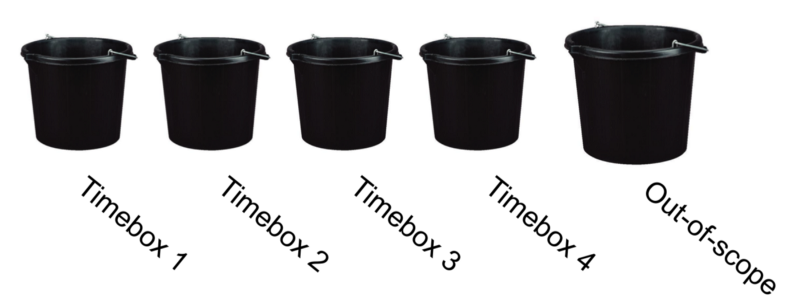
3. روش سهنقطهای
تخمین سهنقطهای به حوزه دانش مدیریت زمان تعلق دارد. همچنین میتواند در تخمین هزینه استفاده شود. مشکل تخمینهای نقطهای این است که به ندرت صحیح هستند. تخمین سهنقطهای تخمین بهتری است، در مقایسه با تخمین نقطهای.
تخمین نقطهای به سادگی یک عدد واحد به شما میدهد – برای مثال،
توسعه:چقدر طول میکشد تا ویژگی فرآیند سفارش را کامل کنید؟
این چقدر قابل اعتماد است5 روزتخمین؟ این بستگی به توسعهدهنده دارد و اینکه آیا این کار قبلاً انجام شده است یا نه؟ اگر این یک کار روتین باشد و بارها انجام شده باشد، تخمین نقطهای ممکن است راهی باشد. اما اگر این چیزی باشد که هرگز انجام نشده یا یک فعالیت جدید باشد، یا مهندس در این فعالیت جدید باشد، این عدد ممکن است نادرست باشد. در چنین مواردی، رفتن به سمت تخمین سهنقطهای به شما اطمینان بیشتری میدهد.
تخمین سهنقطهای به تخمین خوشبینانهترین (O)، تخمین محتملترین (M) و تخمین بدبینانهترین (کمترین تخمین محتمل) یا (L) نگاه میکند.
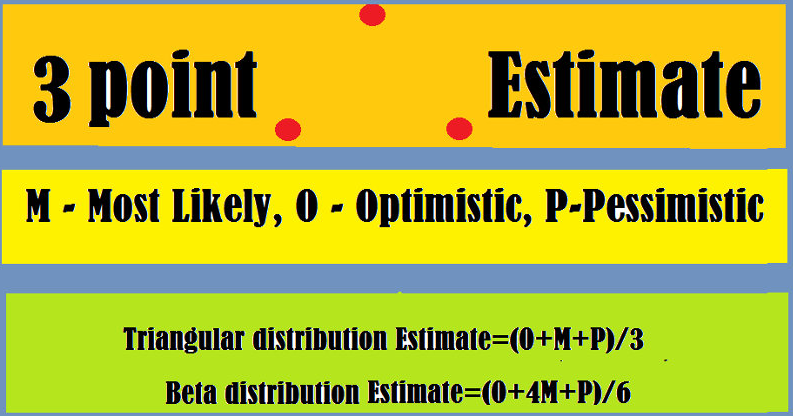
6. تخمین وابستگی
تخمین وابستگی به یافتن شباهتهای داستانهای کاربری که باید تخمین زده شوند، مربوط میشود. وظیفه تیم گروهبندی داستانهای کاربری مشابه است. بهترین راه برای «یافتن شباهت» تجسم فرآیند و ترکیب زیرمجموعهها به گروههای بزرگ است.

نکته:این روش در یک گروه کوچک از افراد و تعداد کمی از داستانهای کاربری بهترین عملکرد را دارد، شما باید تخمینهای متفاوتی به گروههای مختلف اختصاص دهید.
7. روش مرتبسازی
این رویکرد به شما این امکان را میدهد که قضاوت نسبتاً دقیقی از اندازه نسبی داستان کاربر داشته باشید. اگر یک گروه کوچک از کارشناسان این کار را انجام دهند، بهترین نتیجه را خواهد داشت.
اینگونه است: تمام داستانهای کاربری را در یک برچسب تیک از کم به زیاد به هر ترتیبی قرار دهید و هر شرکتکننده میتواند یک داستان کاربری را در مقیاس جابجا کند و فقط یک فریم را برای هر حرکت پایین یا بالا ببرد. یا یک دور را رها کند. این فرآیند را تکرار کنید تا زمانی که تمام اعضای تیم نخواهند داستان کاربری را جابجا کنند یا یک دور را رها کنند.

نکته:این روش مرتبسازی میتواند تخمینی از اندازه دانهای دقیق به دست آورد که برای گروههای کوچک از افراد و تعداد زیادی داستان کاربری مناسب است.
خلاصه
هدف این مقاله معرفی وجود این روشها به شماست. قبل از استفاده روزانه، باید روشهای مختلفی را بر اساس داستانهای کاربری خود و اندازه کارکنانتان امتحان کنید.
اگر به این روشها علاقهمند هستید، لطفاً پیامی در بخش نظرات بگذارید. میتوانم روش(ها) را با جزئیات بیشتری در یک مقاله جداگانه توضیح دهم.
مقالات دیگر در تکنیکها و آثار اسکرام
- آثار اسکرام چیست؟
- تعریف انجام شده در مقابل معیارهای پذیرش
- تعریف آماده در اسکرام چیست؟
- چگونه یک هدف اسپرینت بنویسیم؟
- لیست کارهای محصول در اسکرام چیست؟ چه کسی مسئول آن است؟
- چگونه لیست کارهای محصول را تصفیه کنیم؟
- لیست کارهای اسپرینت در اسکرام چیست؟
- چگونه لیست کارهای محصول را با استفاده از روش MoSCoW اولویتبندی کنیم؟
- چگونه لیست کارهای محصول را با استفاده از روش 100 امتیاز اولویتبندی کنیم؟
- هدف اسپرینت در اسکرام چیست؟
- نمودار سوختن در اسکرام چیست؟
- الگوی نقش-ویژگی-دلیل چیست؟
- افزایش اسپرینت در مقابل محصول قابل ارسال بالقوه در مقابل MVP در مقابل MMP
- اهداف SMART بنویسید و برای داستانهای کاربری INVEST کنید
- DEEP در لیست کارهای محصول چیست؟
- چگونه چشمانداز محصول را برای پروژه اسکرام بنویسیم؟
- چگونه از تخته اسکرام برای توسعه چابک استفاده کنیم؟
- چه کسی اقلام لیست کارهای محصول یا داستانهای کاربری را در اسکرام ایجاد میکند؟
- برآورد چابک چیست؟
- نقطه داستان در چابک چیست؟ چگونه یک داستان کاربری را برآورد کنیم؟
This post is also available in Deutsch, English, Español, Français, Bahasa Indonesia, 日本語, Polski, Portuguese, Ру́сский, Việt Nam, 简体中文 and 繁體中文.













